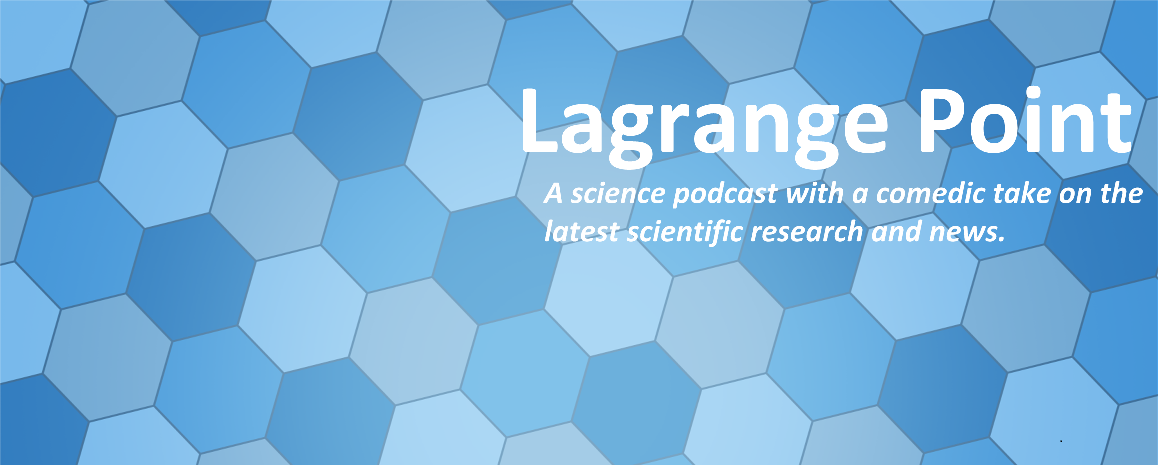Episodes

Monday Apr 27, 2020
Episode 376 - Learning from spider webs, venom and combs
Monday Apr 27, 2020
Monday Apr 27, 2020
What can we learn from spiders webs, venom and combs? How do spiders manage to weave intricate webs without getting tangled in them? How can spider's legs help develop next generation nano materials? How can spider venom help us fight back against the opioid crisis? Spider venom is dangerous but it can also help reduce harm in pain management.
- Akello J. Agwa, Poanna Tran, Alexander Mueller, Hue N. T. Tran, Jennifer R. Deuis, Mathilde R. Israel, Kirsten L. McMahon, David J. Craik, Irina Vetter, Christina I. Schroeder. Manipulation of a spider peptide toxin alters its affinity for lipid bilayers and potency and selectivity for voltage-gated sodium channel subtype 1.7. Journal of Biological Chemistry, 2020; 295 (15): 5067 DOI: 10.1074/jbc.RA119.012281
- Anna-Christin Joel, Marco Meyer, Johannes Heitz, Alexander Heiss, Daesung Park, Hana Adamova, Werner Baumgartner. Biomimetic Combs as Antiadhesive Tools to Manipulate Nanofibers. ACS Applied Nano Materials, 2020; 3 (4): 3395 DOI: 10.1021/acsanm.0c00130
- Po Peng, Devi Stuart‐Fox, Szu‐Wei Chen, Eunice J. Tan, Guan‐Lin Kuo, Sean J. Blamires, I‐Min Tso, Mark A. Elgar. High contrast yellow mosaic patterns are prey attractants for orb‐weaving spiders. Functional Ecology, 2020; DOI: 10.1111/1365-2435.13532

Monday Apr 20, 2020
Episode 375 - Solar Panels that work at night and on greenhouses
Monday Apr 20, 2020
Monday Apr 20, 2020
From solar panels on greenhouses to ones that work at night. How can you use radiant heat to make a solar panel work at night? Is there a way to harness energy from the sun even at night? Can you cover a greenhouse with solar panels without destroying your crops? What's the tipping point for harvesting solar energy for your greenhouse? Balancing the light needs of solar panels and of crops in a greenhouse. How does the photosynthesis process know which path to take? Shinning a light on the photosynthetic process.
- Tristan Deppe, Jeremy N. Munday. Nighttime Photovoltaic Cells: Electrical Power Generation by Optically Coupling with Deep Space. ACS Photonics, 2019; 7 (1): 1 DOI: 10.1021/acsphotonics.9b00679
- Eshwar Ravishankar, Ronald E. Booth, Carole Saravitz, Heike Sederoff, Harald W. Ade, Brendan T. O’Connor. Achieving Net Zero Energy Greenhouses by Integrating Semitransparent Organic Solar Cells. Joule, 2020; DOI: 10.1016/j.joule.2019.12.018
- Philip D. Laible, Deborah K. Hanson, James C. Buhrmaster, Gregory A. Tira, Kaitlyn M. Faries, Dewey Holten, Christine Kirmaier. Switching sides—Reengineered primary charge separation in the bacterial photosynthetic reaction center. Proceedings of the National Academy of Sciences, 2020; 117 (2): 865 DOI: 10.1073/pnas.1916119117

Monday Apr 13, 2020
Episode 374 - Lasers, Metal and Insect wings vs Bacteria
Monday Apr 13, 2020
Monday Apr 13, 2020
Taking the fight to bacteria with lasers, metal and insect wings. How can lasers help make a material into a bacteria destroyer? Metal in fantasy has demon slaying properties, but how can it help fight bacteria? What can we learn from insect wings to help make safer implants? What is it about silver that makes it good for killing bacteria (and werewolves). Why are metals so dangerous for bacteria? How can we treat and use metal to make medical devices safer from bacteria?
- Vidhya Selvamani, Amin Zareei, Ahmed Elkashif, Murali Kannan Maruthamuthu, Shirisha Chittiboyina, Davide Delisi, Zheng Li, Lirong Cai, Vilas G. Pol, Mohamed N. Seleem, Rahim Rahimi. Hierarchical Micro/Mesoporous Copper Structure with Enhanced Antimicrobial Property via Laser Surface Texturing. Advanced Materials Interfaces, 2020; 1901890 DOI: 10.1002/admi.201901890
- Asmaa A. Sadoon, Prabhat Khadka, Jack Freeland, Ravi Kumar Gundampati, Ryan H. Manso, Mason Ruiz, Venkata R. Krishnamurthi, Suresh Kumar Thallapuranam, Jingyi Chen, Yong Wang. Silver Ions Caused Faster Diffusive Dynamics of Histone-Like Nucleoid-Structuring Proteins in Live Bacteria. Applied and Environmental Microbiology, 2020; 86 (6) DOI: 10.1128/AEM.02479-19
- J. Jenkins, J. Mantell, C. Neal, A. Gholinia, P. Verkade, A. H. Nobbs, B. Su. Antibacterial effects of nanopillar surfaces are mediated by cell impedance, penetration and induction of oxidative stress. Nature Communications, 2020; 11 (1) DOI: 10.1038/s41467-020-15471-x

Monday Apr 06, 2020
Episode 373 - Deep sea reefs, ocean vents and tiny life
Monday Apr 06, 2020
Monday Apr 06, 2020
This week we look at unlikely partnerships that help sea creatures survive and thrive. What plays a crucial role inside a reef's ecosystem that is often overlooked? What's inside fish guts that help keep a reef healthy? Just how do fish 1000s of kms away end up with the same colonies of microbes? Feel like a tasty snack but stuck in the deep ocean vents, why not methane? How do microbes help worms eat methane?
- Shana Goffredi et al. Methanotrophic bacterial symbionts fuel dense populations of deep-sea feather duster worms (Sabellida, Annelida) and extend the spatial influence of methane seepage. Science Advances, 2020 DOI: 10.1126/sciadv.aay8562
- Jarrod J. Scott, Thomas C. Adam, Alain Duran, Deron E. Burkepile, Douglas B. Rasher. Intestinal microbes: an axis of functional diversity among large marine consumers. Proceedings of the Royal Society B: Biological Sciences, 2020; 287 (1924): 20192367 DOI: 10.1098/rspb.2019.2367

